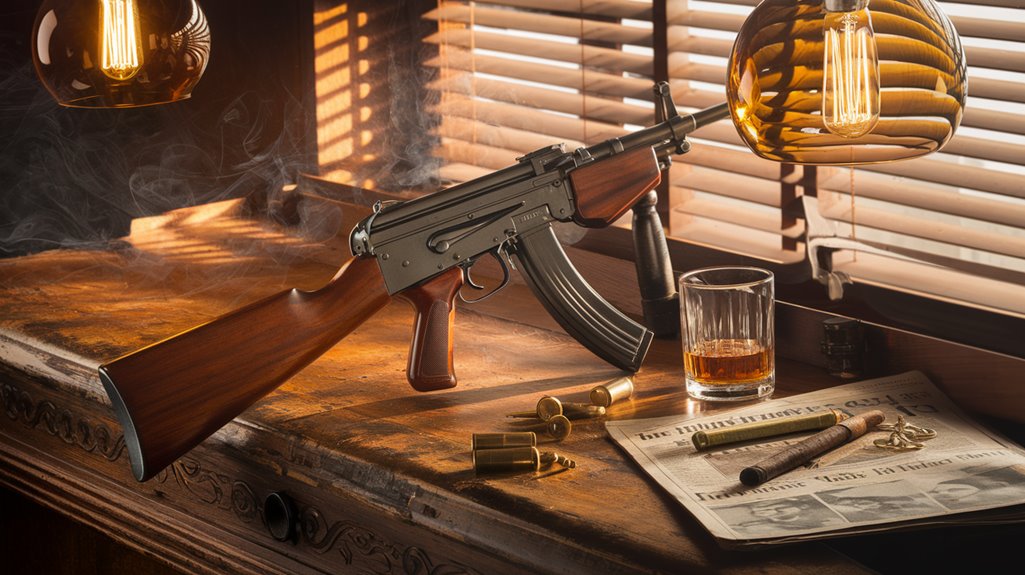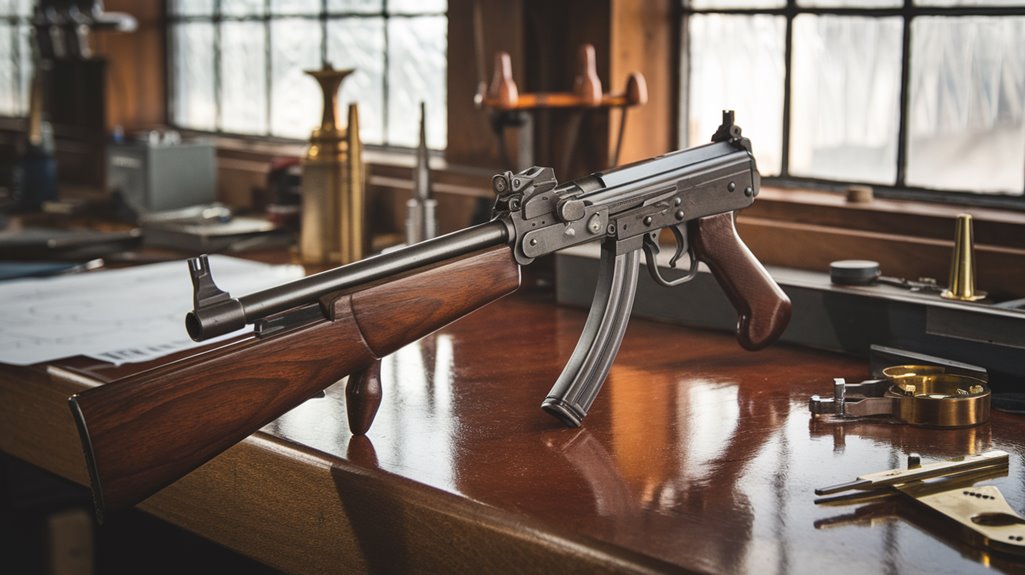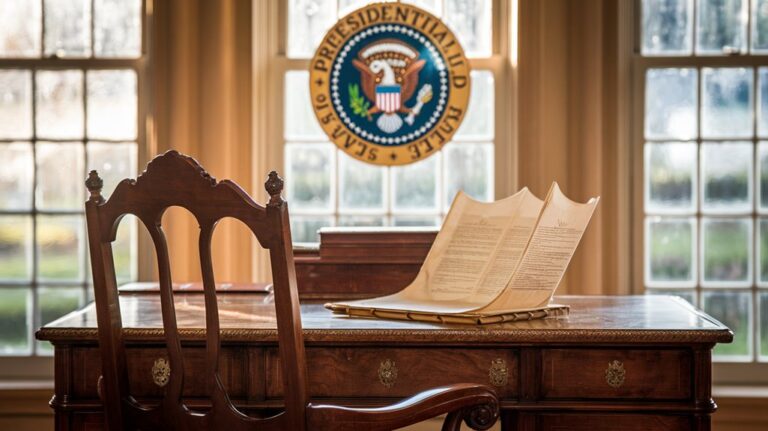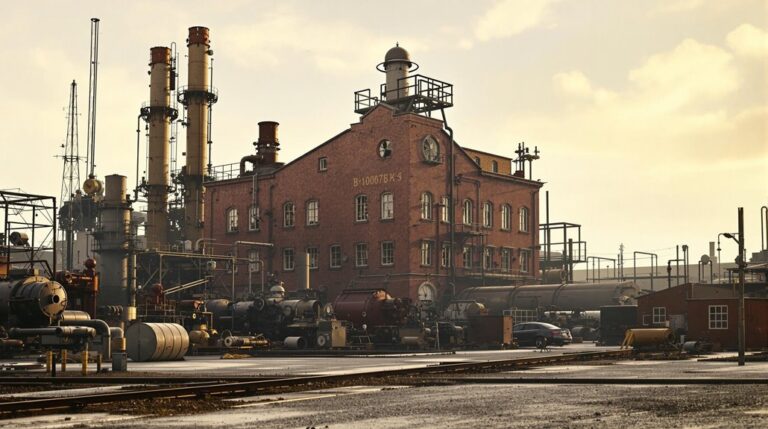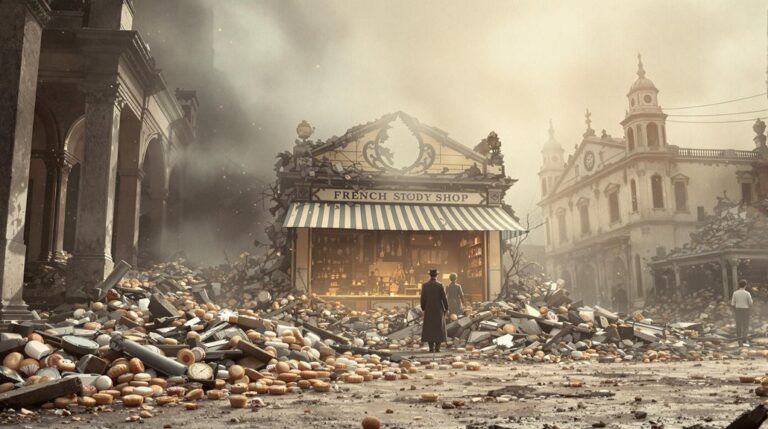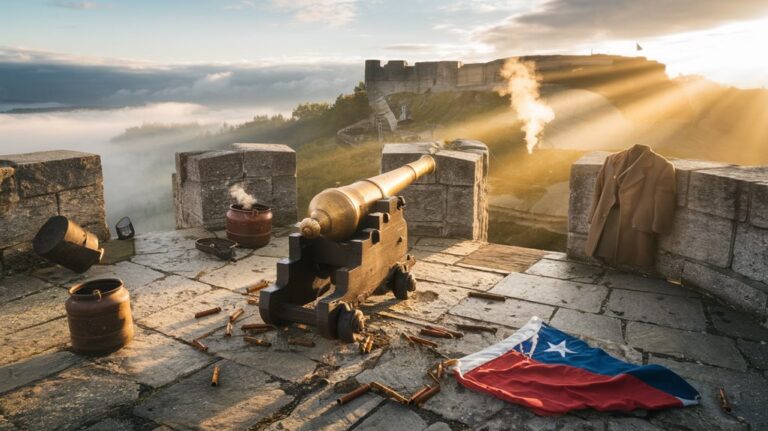Tommy Gun Tales: How a Drum-Fed Machine Gun Rose to Fame
On a chilly Chicago morning in 1929, seven men met their end in what would become known as the St. Valentine's Day Massacre, victims of the weapon that changed American crime forever. You've seen the Tommy Gun in countless films and heard its rat-a-tat in video games, but its real story weaves through the heart of American history. From prohibition-era streets to the beaches of Normandy, this iconic firearm's journey reveals more than just a tale of bullets and brass.
The Birth of a Revolutionary Firearm
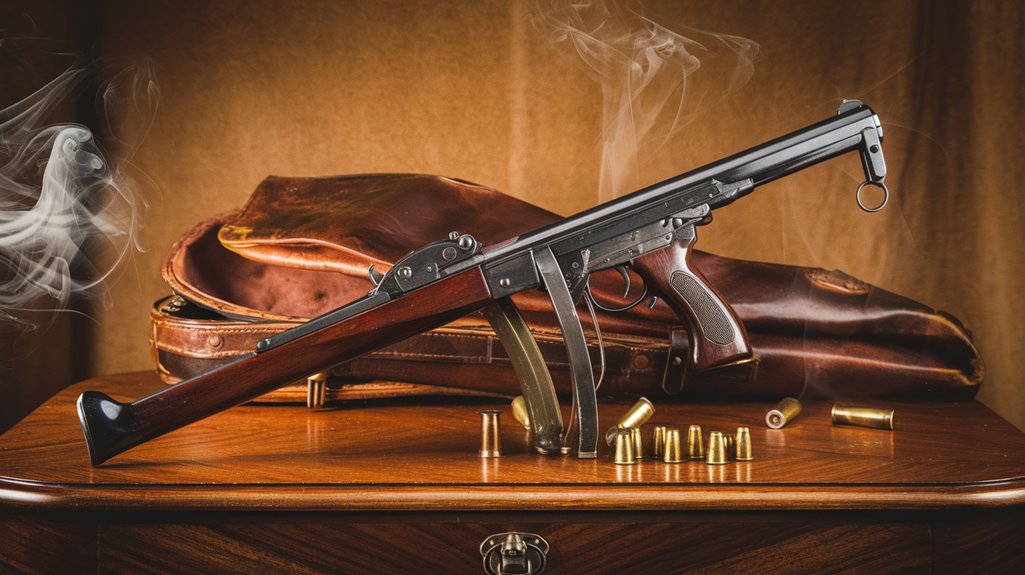
Two key factors shaped the Thompson submachine gun's creation: the brutal nature of trench warfare and Brigadier General John T. Thompson's vision to give soldiers a more effective weapon.
As WWI's devastating trench battles raged on, Thompson saw the need for a portable "trench broom" that could quickly clear enemy positions. After retiring from service in 1914, he began his quest as chief engineer at Remington. Initially, military forces hesitated to adopt the weapon due to concerns about its range and accuracy limitations.
The design evolution began at Auto-Ordnance Corporation, which Thompson founded specifically to develop this revolutionary firearm.
By 1918, early prototypes emerged, though they arrived too late for WWI combat. The first production model, the 1921A, came off Colt's assembly line in March 1921.
You'll find impressive specs in this .45 ACP weapon: it weighed 10 pounds empty, stretched 32 inches long, and offered both semi-auto and full-auto firing modes at up to 725 rounds per minute.
From Military Vision to Gangster's Choice
Though military adoption began slowly with the U.S. Navy and Marine Corps ordering just 500 guns in the 1930s, you'll find the Thompson's path to fame took an unexpected turn during Prohibition. The gun's initial high price tag of $200 per unit limited its early civilian sales. Historical photographs and media from the Digital Library provide vivid documentation of the era.
- John Dillinger and Baby Face Nelson made the gun infamous in their criminal exploits
- The Saint Valentine's Day Massacre cemented the Thompson's reputation in gangster lore
- Law enforcement found themselves outgunned until the FBI began using Thompsons in 1935
- Despite its gangster usage, the weapon proved invaluable during WWII with 1.5 million produced
The Thompson's journey from military vision to gangster's choice shaped its legacy, transforming it from a trench warfare tool into an iconic symbol of both law and lawlessness.
Engineering Marvel: Inside the Thompson
As General Thompson's vision took shape, his submachine gun emerged as an engineering masterpiece of its time.
You'll find design innovations throughout the weapon, from its unique Blish lock mechanism to Cutts' revolutionary compensator that tamed muzzle climb. Just as systematic learning leads to innovation, Thompson's methodical approach to firearms design helped create revolutionary features. The gun's technical specifications were equally impressive, featuring a 10.5-inch barrel chambered in .45 ACP and weighing just under 11 pounds.
What made the Thompson stand out was its versatility. You could choose between 20, 50, or 100-round magazines, and switch from semi-automatic to full-automatic fire with ease. Like modern researchers who must demonstrate quality standards, each Thompson underwent rigorous testing before leaving the factory.
The craftsmanship was evident in every detail, from the walnut stock to the adjustable Lyman sights. Even the metals were specially chosen to eliminate the need for lubrication in the breech mechanism.
World War II: The Tommy Gun's Finest Hour
When the United States entered World War II, the Thompson submachine gun finally found its true calling in combat. You'd find it on the frontlines during the Guadalcanal invasion, where Marines put its fierce firepower to the test in the Solomon Islands. With its high rate of fire and rugged construction, it quickly became a favorite among soldiers in close combat situations.
While the weapon's combat effectiveness shined in street fighting and house-to-house combat, soldiers discovered both strengths and limitations in the field. The Model 1928A1 became one of the dominant variants deployed throughout the war.
- Half a million Thompsons were manufactured by early 1942
- The .45 ACP rounds struggled to penetrate dense jungle foliage
- Allied forces, including the Soviet Union, embraced the weapon
- German troops particularly feared its destructive capabilities
Despite its weight concerns and the eventual introduction of the lighter M3 "grease gun," you couldn't deny the Thompson's impact.
It proved especially valuable in urban warfare, where its stopping power and reliability made it a trusted companion for troops clearing buildings.
Cultural Impact and Lasting Legacy
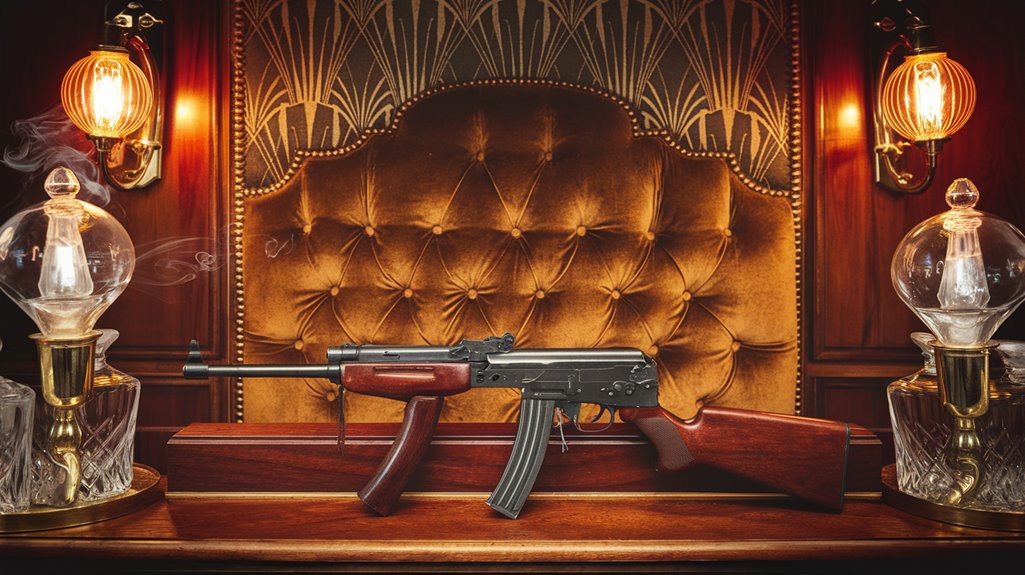
Beyond its military prowess, the Thompson submachine gun's most enduring impact lies in American popular culture.
You'll find the Tommy Gun's cultural symbolism deeply rooted in the era of Prohibition, where it became the weapon of choice for notorious gangsters like Al Capone and John Dillinger. Its media representation in films and literature has immortalized it as the quintessential mobster's weapon, appearing in countless depictions of urban warfare and criminal enterprises. With a firing rate of 600-1200 rounds per minute, it proved devastatingly effective in urban confrontations. The gun's presence in gangster films helped create a complex public fascination with criminality, particularly during the Great Depression era.
You can trace the gun's influence through its role in shaping public perception of the 1920s gangland disputes, particularly during events like the St. Valentine's Day Massacre.
The Tommy Gun's legacy extends far beyond its tactical advantages, having become an iconic symbol of both lawlessness and authority in American society.

